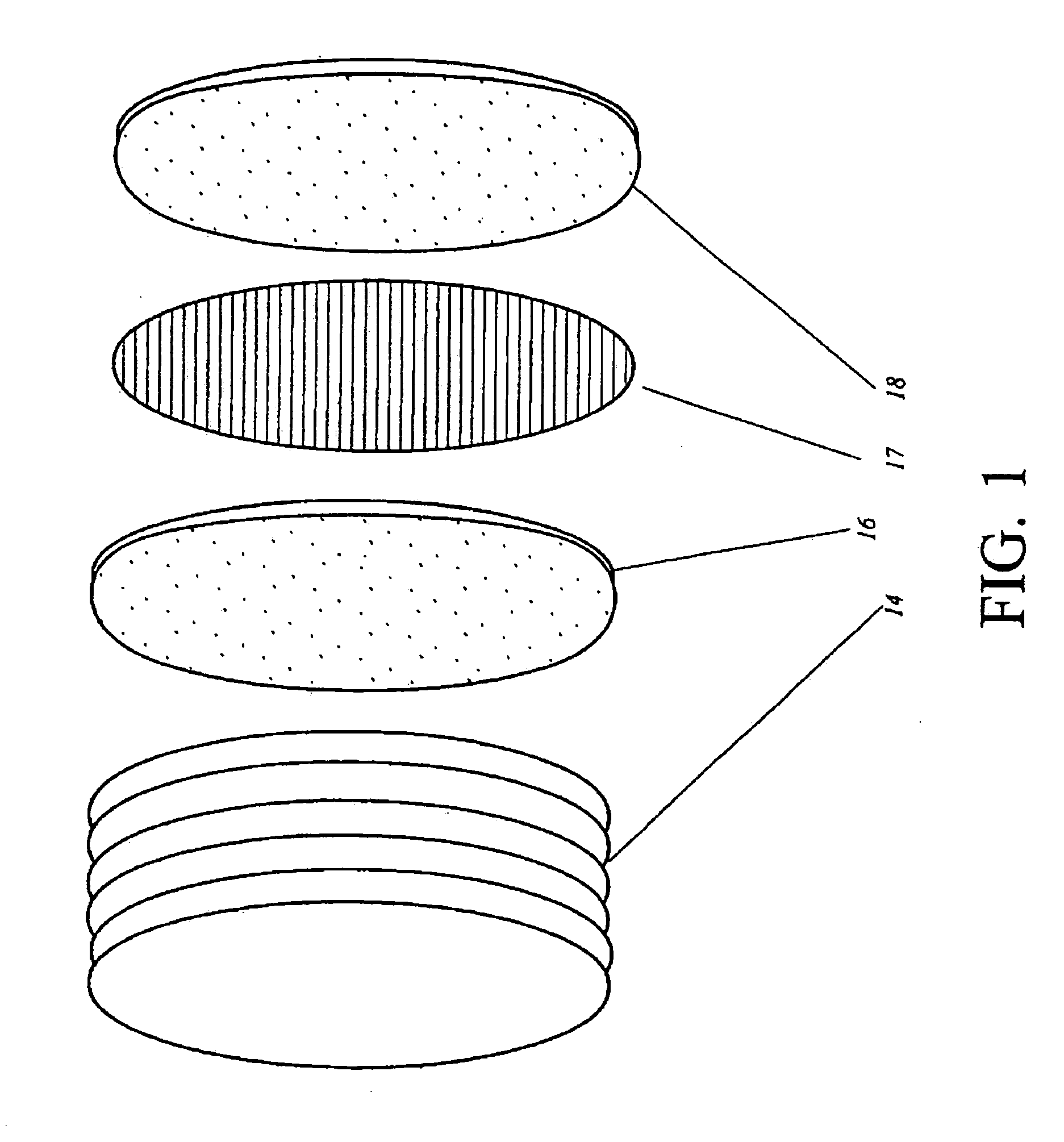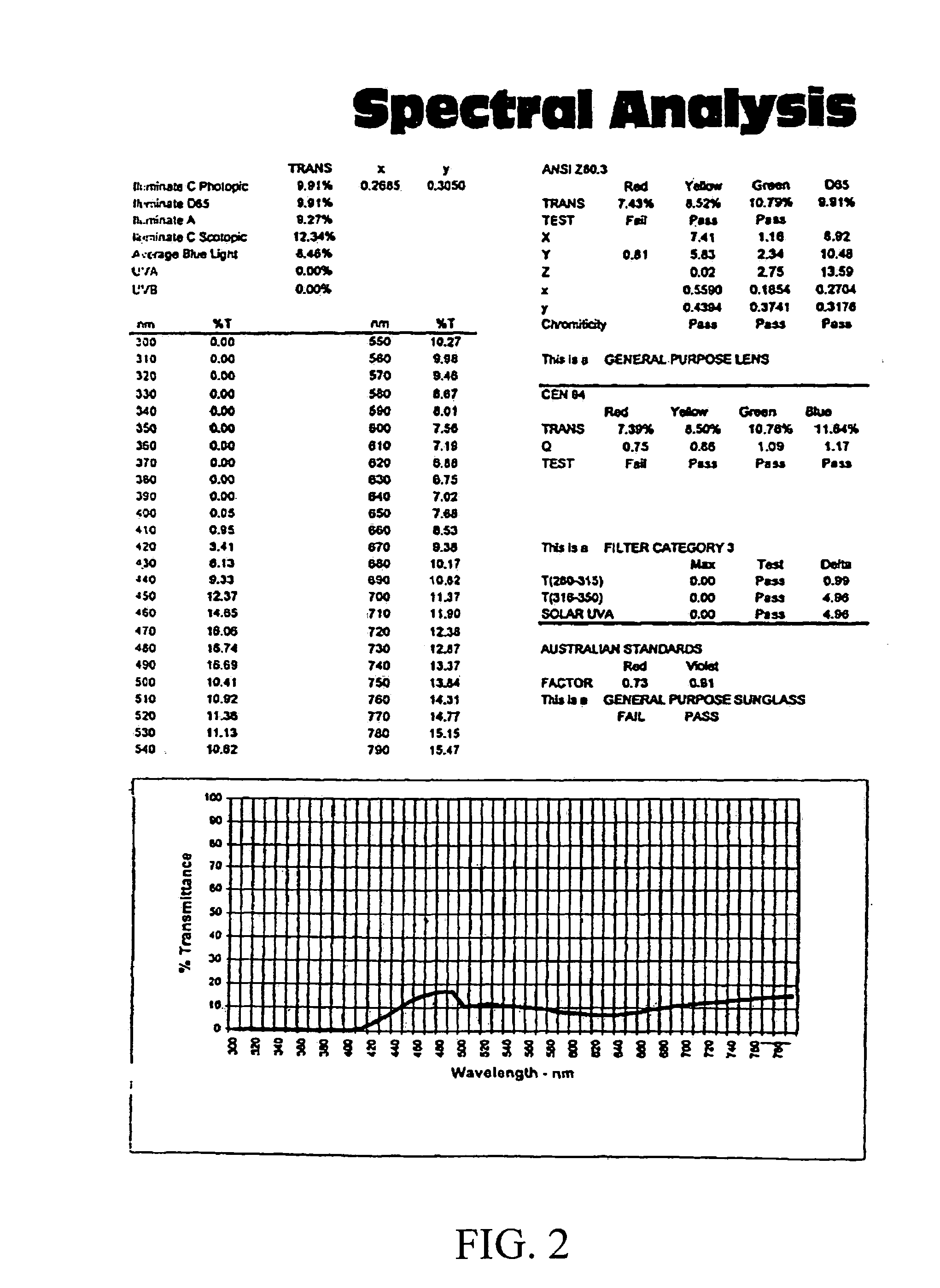Dual-filter ophthalmic lens to reduce risk of macular degeneration
a dual-filter, ophthalmic technology, applied in the field of ophthalmic lenses, can solve the problems of significant damage, difficult to achieve the transmission profile of conventional lens technology, visual impairment and blindness worldwide, etc., to prevent macular degeneration, cataracts and other ocular injuries, and reduce harmful light transmission. , the effect of preserving visual acuity
- Summary
- Abstract
- Description
- Claims
- Application Information
AI Technical Summary
Benefits of technology
Problems solved by technology
Method used
Image
Examples
Embodiment Construction
[0028]Disclosed is an improved lens designed for protective eyewear that includes a dual filter including a first filter for blocking essentially 100% of UV light, and a second filter for filtering blue light. The lens is well-suited for prescription or non-prescription eyewear, inclusive of ophthalmic lenses, sunglasses, polarized sunglasses, intraocular lenses and contact lenses and IOLs. The lens comprises a plastic, polycarbonate (CR-39), Trivex® or other polymeric lens incorporating a first filter for blocking essentially 100% of UV light, and a second filter to selectively block visible blue light, the combination additionally giving a high degree of UVA and UVB protection with a well-balanced light transmission profile under all light conditions, thereby maximizing protection while preserving clarity of vision.
[0029]FIG. 1 is a perspective exploded sketch showing the various lens layers mentioned above according to a multi-layer embodiment of the present invention. The multi-...
PUM
 Login to View More
Login to View More Abstract
Description
Claims
Application Information
 Login to View More
Login to View More - R&D
- Intellectual Property
- Life Sciences
- Materials
- Tech Scout
- Unparalleled Data Quality
- Higher Quality Content
- 60% Fewer Hallucinations
Browse by: Latest US Patents, China's latest patents, Technical Efficacy Thesaurus, Application Domain, Technology Topic, Popular Technical Reports.
© 2025 PatSnap. All rights reserved.Legal|Privacy policy|Modern Slavery Act Transparency Statement|Sitemap|About US| Contact US: help@patsnap.com



